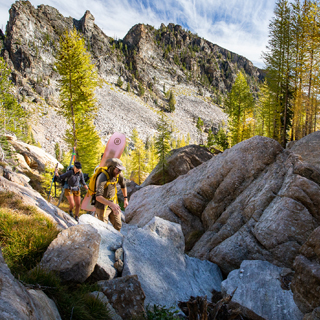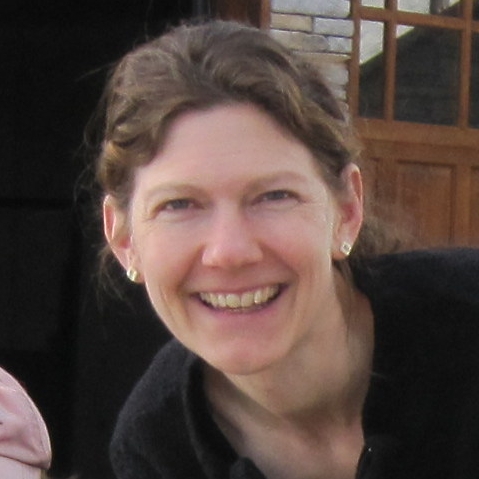Faculty
Anna Klene
Professor of Geography
Contact
- Office
- Stone Hall 216
- anna.klene@umontana.edu
- Office Hours
Fall 2023: Wednesdays 3-5 pm in person & via Zoom
- Website
- https://www.umt.edu/environment/personnel/faculty.php?ID=611
Education
- Ph.D., Climatology, University of Delaware, 2005
- M.A., Geography, State University of New York at Albany, 1999
- B.S., Physical Geography, University of Cincinnati, 1996
Courses Taught
- CCS/ERTH 303N - Weather and Climate - traditional and online versions
- GPHY 317 - Geomorphology
- GPHY 487 - Remote Sensing and Raster GIS
- GPHY 491 - GIS Applications of Unmanned Aerial Vehicles (UAVs)
- GPHY 525 - Seminar In Geography: Paleoclimate and Global Change
- GPHY 587 - Digital Image Analysis and Modeling
Research Interests
Arctic and Alpine Climatology, Cold Region Geomorphology, Permafrost Variability, Climate-Ground Interactions, Long-term Climate Analysis, Urban Effects on Climate, Use of Remote Sensing in Modeling
Selected Publications
Please see my ResearchGate or GoogleScholar pages for downloadable copies of publications (ORCID 0000-0002-0579-1628).
- Yoshikawa, K., A.A. Maslakov, G. Kraev, H. Ikuta, V. Romanovsky, J.C. George, A.E. Klene, and K.E. Nyland (2022): Food storage in permafrost and seasonally frozen ground in Chukotka and Alaska Communities. Arctic, v75, n2, 225-241: DOI: 10.14430/arctic75259
- K.E. Nyland, N.I. Shiklomanov, D.A. Streletskiy, F.E. Nelson, A.E. Klene & A.L. Kholodov (2021): Long-term Circumpolar Active Layer Monitoring (CALM) program observations in Northern Alaskan tundra, Polar Geography, DOI: 10.1080/1088937X.2021.1988000
- Z.M. Seligman, A.E. Klene, and F.E. Nelson, 2019. Rock glaciers of the Beartooth and northern Absaroka ranges, Montana, USA. Permafrost and Periglacial Processes, v30, n4, 249-259. https://doi.org/10.1002/ppp.2019
- A.E. Klene and F.E. Nelson, 2019. Urban geocryology: Mapping urban–rural contrasts in active-layer thickness, Barrow Peninsula, Northern Alaska. Annals of the Association of American Geographers, v109, n5, 1394-1414. DOI: 10.1080/24694452.2018.1549972
- K.E. Nyland, A.E. Klene, J. Brown, F.E. Nelson, N.I. Shiklomanov, D.A. Streletskiy, K. Yoshikawa, 2017. Traditional Iñupiat ice cellars (Sigluaq) in Barrow, Alaska: Characteristics, temperature monitoring, and distribution. Geographical Review. Special Issue: Arctic, v107, n1, 143-158. DOI: 10.1111/j.1931-0846.2016.12204.x.
- D.A. Streketskiy, N.I. Shiklomanov, J.D. Little, F.E. Nelson, J. Brown, K.E. Nyland, and A.E. Klene, 2017. Recent accelerated thaw subsidence in undisturbed tundra landscapes, Barrow, Alaska, 1962-2015. Permafrost and Periglacial Processes, v28, n3, 566–572: DOI: 10.1002/ppp.1918
- Z.A. Holden, A. Swanson, A.E. Klene, J.T. Abatzoglou, S.Z. Dobrowski, S.A. Cushman, J. Squires, G.G. Moisen, and J.W. Oyler, 2016. Development of high-resolution (250 m) historical daily gridded air temperature data using reanalysis and distributed sensor networks for the US Northern Rocky Mountains. International Journal of Climatology, v36, n10, 3620-32, DOI: 10.1002/joc.4580.
- J.W. Oyler, S.Z. Dobrowski, A.P. Ballantyne, A.E. Klene, and S.W. Running, 2015. Artificial Amplification of Warming Trends Across the Mountains of the Western United States. Geophysical Research Letters, v42, n1, 153–161, DOI: 10.1002/2014GL062803.
- Z.A. Holden, A.E. Klene, R. Keefe, and G. Moisen, 2013. Design and Preliminary Evaluation of an Inexpensive Radiation Shield for Monitoring Surface Air Temperatures. Agricultural and Forest Meteorology, v180, 281-6. DOI: 10.1016/j.agrformet.2013.06.011.
- K.L. Riley, J. Abatzoglou, I. Grenfell, A.E. Klene and F.A. Heinsch, 2013. The relationship of large fire occurrence with drought and fire-danger indices in the western USA, 1984-2008: The role of temporal scale. International Journal of Wildland Fire, v22, n7, 894-909. DOI:10.1071/WF12149.
- A.E. Klene, F.E. Nelson, and K.M. Hinkel, 2013. Urban - rural contrasts in summer soil-surface temperature and active-layer thickness, Barrow, Alaska, USA. Polar Geography, v36, n3, 197-221. DOI: 10.1080/1088937X.2012.706756
Publications
- K.E. Nyland, N.I. Shiklomanov, D.A. Streletskiy, A.E. Klene, and F.E. Nelson, 2012. Effect of vegetation of soil-surface temperatures in northern Alaska. Proceedings of the 10th International Conference on Permafrost, Vol 1: International Contributions. Salekhard, Russia: The Northern Publisher (Severnoye Izdatelstvo), pp 295-300.
- K.M. Hinkel, A.E. Klene, and F.E. Nelson, 2008. Spatial and interannual patterns of winter n-factors near Barrow, Alaska. Proceedings of the 9th International Conference on Permafrost, 705-710.
- A.E. Klene, F.E. Nelson, N.I Shiklomanov, and D.A.Streletskiy, 2008. Interannual variability of winter n-factors in the Kuparuk River basin, Alaska. Proceedings of the 9th International Conference on Permafrost, 953-958.
- D.A. Streletskiy, N.I. Shiklomanov, F.E. Nelson, and A.E. Klene, 2008. Long-term active-layer thickness and ground surface temperature trends: 13 years of observations at Alaskan CALM sites. Proceedings of the 9th International Conference on Permafrost, 1727-1732.
- K.M. Hinkel, A.E. Klene, and F.E. Nelson, 2004. The summer climate of an Arctic coastal village: Preliminary observations from the Barrow Urban Heat-Island Study. Polar Geography, v28, n3, 197-221.
- K.M. Hinkel, F.E. Nelson, A.E. Klene, and J.H. Bell, 2003. The winter urban heat island at Barrow, Alaska. International Journal of Climatology, v23, n15, 1889-1905.
- A.E. Klene, K.M. Hinkel, and F.E. Nelson, 2003. Initial results from the Barrow, Alaska Heat Island Study: Soil temperatures and active-layer thickness. Proceedings of the 8th International Conference on Permafrost.
- A.E. Klene, F.E. Nelson, J. Nevins, D. Rogers, and N.I. Shiklomanov, 2002. Permafrost science and secondary education: direct involvement of teachers and students in field research. Geomorphology, v47, n2-4, 275-287.
- A.E. Klene, F.E. Nelson, and N.I. Shiklomanov, 2001. The n-factor as a tool in geocryological mapping: seasonal thaw in the Kuparuk River Basin, Alaska. Physical Geography, v22, n6, 449-466.
- A.E. Klene, F.E. Nelson, N.I. Shiklomanov, and K.M. Hinkel, 2001. The n-factor in natural landscapes: Variability of air and soil-surface temperatures, Kuparuk River basin, Alaska. Arctic, Antarctic and Alpine Research, v33, n2, 140-148.
- A. Lapenis and A. Klene, 1997. Conveyor of live germs? Eos, v78, n34, August 26, p359.
Specialized Skills
Arctic and Alpine Environments, Climatology, Cryosphere, Geomorphology, Modeling, Remote Sensing.
Professional Experience
Dr. Klene's research has centered on northern Alaska, funded under a series of NSF grants investigating changes in permafrost under the auspices of the Circumpolar Active-Layer Monitoring (CALM) Project, which is funded through 2024. The research group has focused on modeling the spatial and temporal variability of the active layer (seasonally thawed layer) above permafrost, which is a function of air temperature, vegetation, moisture, and soil characteristics. Almost all of the biological, chemical, and hydrological processes occur in this thin layer. Her master's thesis examined empirical records of air and soil temperatures and formulated a strategy for linking these parameters with satellite data to estimate thaw depth over large (regional-scale) areas. For her dissertation, Dr. Klene began focusing on air temperature variability, the effects of urbanization, and hazards associated with permafrost under a changing climate in northern Alaska. Her dissertation explored how some of these have been manifested in the village of Barrow as part of the Barrow Urban Heat Island Study (BUHIS). In August 2010, New Orleans High School teacher Josh Dugat joined the crew for their field season in northern Alaska. Check out his blog and photos at the CALM PolarTrec website. PostDoc Kelsey Nyland posted this video "FrostByte" describing part of her work with our group as a graduate student. She also co-Chairs the International Permafrost Association's Education & Outreach Committee - check out our links to online resources!
Currently, Dr. Klene and her students are continuing work with the CALM Project (both in northern Alaska and internationally); working on periglacial features in western Montana; and collaborating with the USFS on projects using GIS to model rare plant habitat and variability of micro-climates in the northern Rockies. Check out a 2016 Missoulian article about that effort. Grad student Joe Milbrath's thesis was featured in UM's Crown of the Continent and Greater Yellowstone on-line magazine (see page 16).
In teaching, Dr. Klene helped to create the Certificate in Geographic Information System Sciences and Technologies administered jointly by the College of Humanities & Sciences and the Franke College of Forestry & Conservation and currently serves on the Board of the GIS Committee. She also serves on the Board for the interdisiplinary Minor in Climate Change Studies: Integrating Science, Society, and Solutions. In spring 2010, Dr. Klene received a Helen & Winston Cox Educational Excellence Award from the College.
International Experience
Dr. Klene has traveled widely, especially in the Arctic. She has served as an instructor for a field course on permafrost in West Siberia, has made trips to Norway for conferences on Climate Change and Indigenous Peoples, the International Polar Year, and attended the European Permafrost Conferences in Svalbard and Portugal, and the first ICOP held in the southern hemisphere - in New Zealand. However, fun trips have included Mexico and Hawaii.

